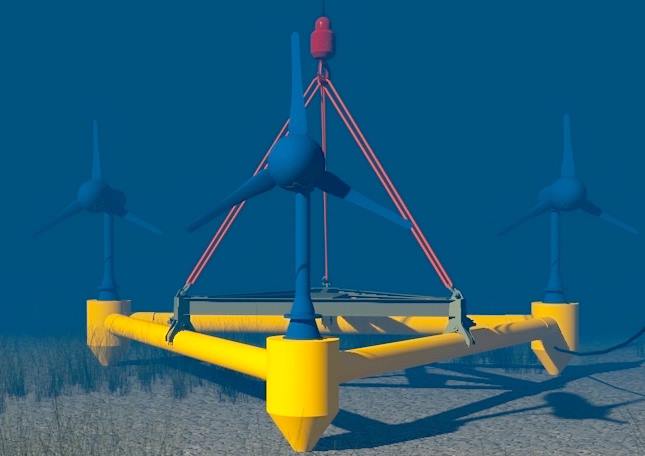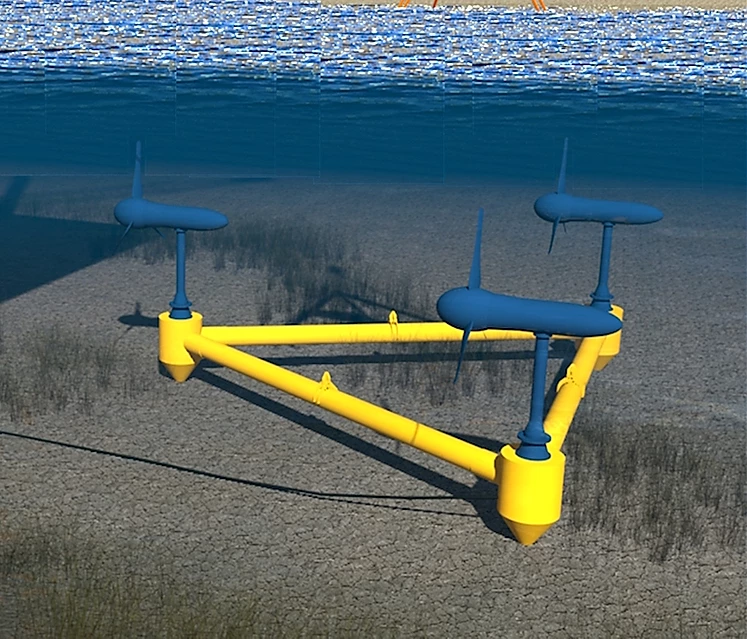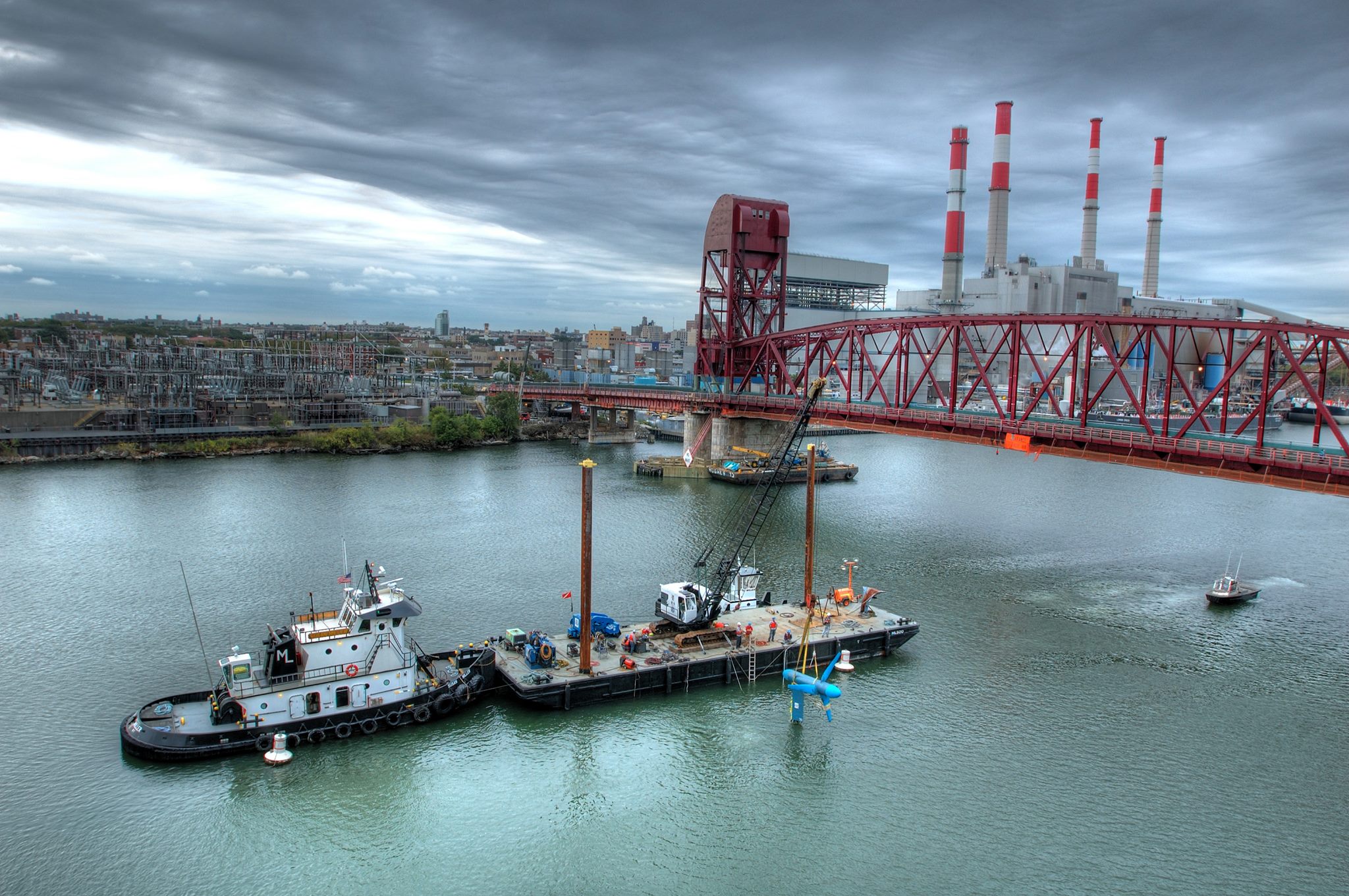Verdant Power
Capturing the natural power of water currents for renewable energy
Next generation water power
Verdant Power is driven by a simple goal: to capture the natural power of water currents found in tides, rivers and canals and convert it into renewable electricity. Known as marine energy, this resource is predictable, reliable, and environmentally benign. Industry trailblazer Verdant Power’s technology for harnessing this clean energy is their Free Flow System (FFS).
The key component of FFS is a three-bladed, horizontal-axis turbine that operates much like a modern-day wind turbine. Three blades rotate at a slow but regular rate to convert the kinetic energy of water into electric or mechanical power
.
A steel, triangular frame mount called a TriFrame™ allows three turbines to be mounted—one at each angle—and move in concert. The arrangement is easily scaled by placing multiple mounts in a field array to create a fully underwater turbine farm.
CHALLENGES
composite builders & Verdant Power

APPROACH
Material Samples & Building

PROTOTYPE

RESULTS
MAximum Strength & Endurance

composite builders & Verdant power
CHALLENGE
Verdant Power called on Composite Builders to support the development and testing of the 5th generation of their FFS. Our challenge was to produce composite materials that would be used to manufacture the turbine blades, fabricate the tooling and prototype the parts. How would we create a commercially economical design that would be reliable, resilient, and environmentally compatible? How would we build a better blade?


material samples & Building
APPROACH
Drawing on extensive experience in manufacturing and composite component construction, our experts got to work developing material samples that would eventually be used to form the newest turbine blade. A variety of matrices with fiberglass pre-impregnated polymers were used and the resulting custom material was tested by the National Renewable Energy Laboratory (NREL).
Once the material passed all performance, environmental and cost tests, it was time to build.
We employed our 5-axis computer numeric controlled (CNC) machine to mill high-density tooling board to create a male plug. That plug was then coated with a release film and laminated with high temperature, pre-impregnated fiberglass to produce a female tool. Doing this allowed us to fabricate a tool with similar material as was used for the production parts. This matters when manufacturing multiple parts from the same tool, because it creates a tolerance for the expansion and contraction caused by the heating and cooling process when curing a pre-impregnated part.
Lamination
PROTOTYPE
To craft a blade that would surpass the strength of its predecessors, Composite Builders team members Brian MacInnes and Ken Workinger tailored a lamination schedule for the prototype. Our team then fabricated a prototype blade, using our standards of laminating and debulking, to create a well-built, consolidated part. The curing process was completed in a pressurized autoclave which resulted in further consolidation and elimination of possible air trapping and bridging.


maximum strength & Endurance
RESULTS
The blade was tested by the NREL where its maximum strength, endurance, and longevity were measured. Speaking as loudly as any data is the fact that our blade thrice broke the test jig during strength and endurance evaluations.
With our operation a success, we moved on to the final phase of the project: producing a full set of blades for the TriFrame™ with additional tooling and fairing structures for the turbine hubs and pylons. These structures will be assembled to the full-scale prototype and placed in the currents of New York’s East River.
Composite Builders seamlessly executed the challenge of developing the FFS turbine 5th generation blade from concept to completion. The result of our collaboration exceeded expectations and is, in every way, a better blade. We are pleased to be part of a project that will support Verdant Power as they continue to shape the future of marine energy.
Work With Us
Tell us about your project. Contact us today.
